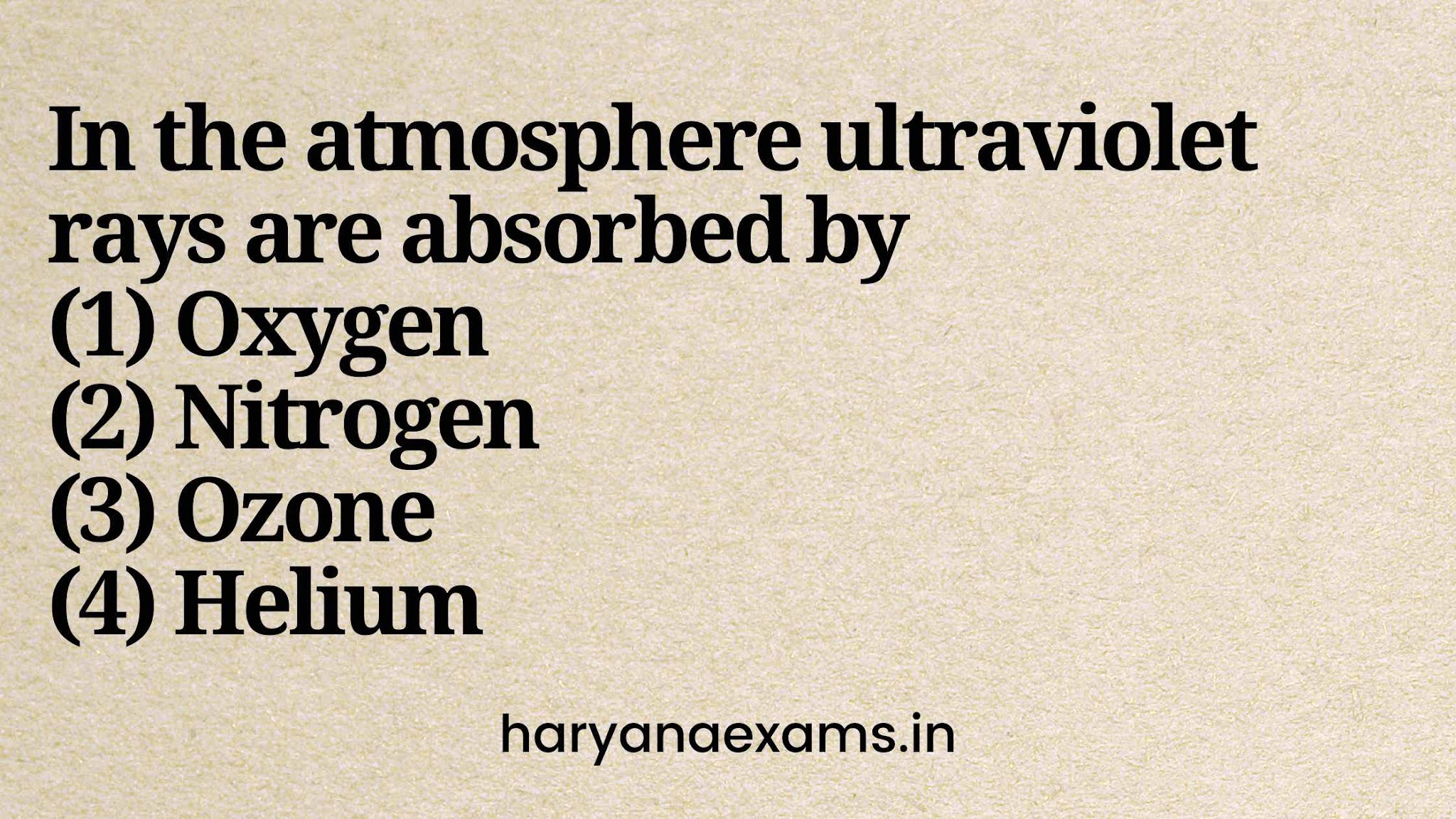In the atmosphere ultraviolet rays are absorbed by
(1) Oxygen
(2) Nitrogen
(3) Ozone
(4) Helium
Answer: (1) Most of the ultraviolet radiation in sunlight is absorbed by oxygen in Earth’s atmosphere, which forms the ozone layer of the lower stratosphere. UV light is found in sunlight (where it constitutes about 10% of the energy in a vacuum) and is emitted by electric arcs and specialized lights such as black lights. It can cause chemical reactions and causes many substances to glow or fluoresce. Most ultraviolet is classified as non-ionizing radiation. The higher energies of the ultraviolet spectrum from wavelengths about 10 nm to 120 nm (‘extreme’ ultraviolet) are ionizing, but this type of ultraviolet in sunlight is blocked by normal di-oxygen in air and does not reach the ground. In addition to short wave UV blocked by oxygen, a great deal (>97%) of mid-range ultraviolet (almost all UV above 280 nm and most above 315 nm) is blocked by the ozone layer, and like ionizing short wave UV, would cause much damage to living organisms if it penetrated the atmosphere.

